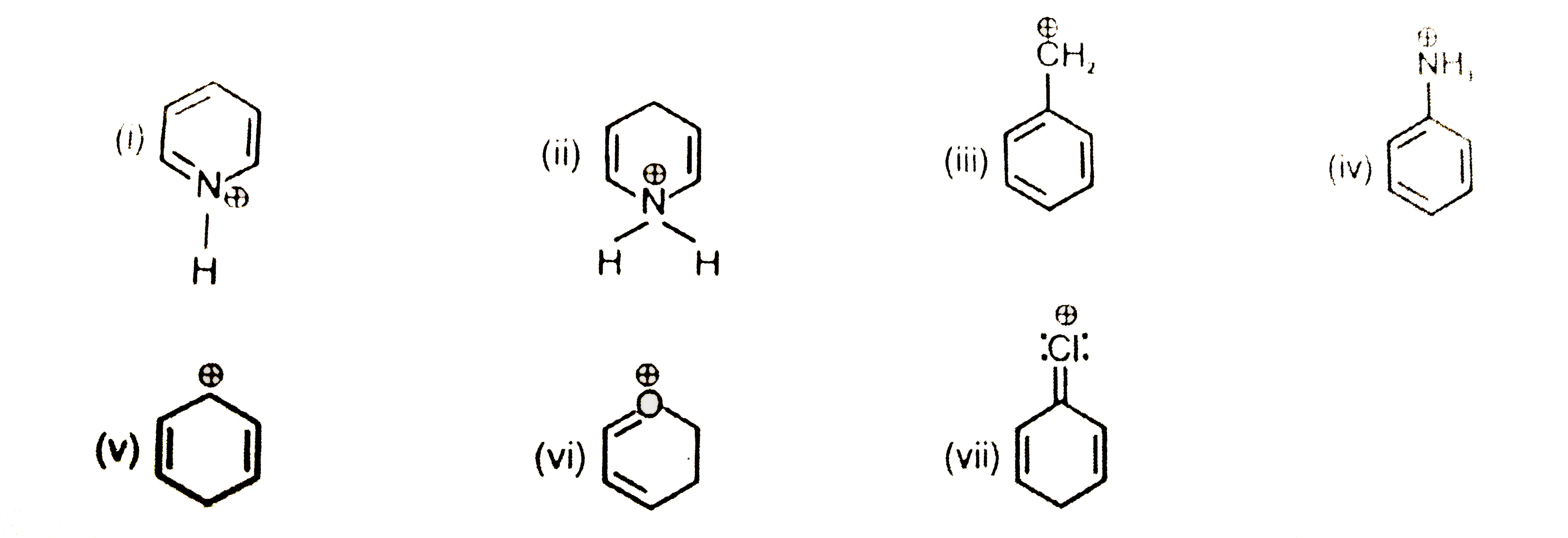Find the total number of positions where positive charge can be delocalized by true resonance
 (Excluding the given position)
(Excluding the given position)
One
Two
Three
Four
The correct Answer is:B
Step by step video, text & image solution for Find the total number of positions where positive charge can be delocalized by true resonance (Excluding the given position) by Chemistry experts to help you in doubts & scoring excellent marks in Class 11 exams.
Updated on:21/07/2023Topper's Solved these Questions
- GENERAL ORGANIC CHEMISTRY-IBOOK - RESONANCECHAPTER - GENERAL ORGANIC CHEMISTRY-IEXERCISE - EXERCISE-2 PART-III : ONE OR MORE THAN ONE OPTIONS CORRECT TYPE
9 Videos
- GENERAL ORGANIC CHEMISTRY-IBOOK - RESONANCECHAPTER - GENERAL ORGANIC CHEMISTRY-IEXERCISE - EXERCISE-2 PART-IV : COMPREHENSION
5 Videos
- GENERAL ORGANIC CHEMISTRY-IBOOK - RESONANCECHAPTER - GENERAL ORGANIC CHEMISTRY-IEXERCISE - EXERCISE-2 PART-I
20 Videos
- GENERAL ORGANIC CHEMISTRY IIBOOK - RESONANCECHAPTER - GENERAL ORGANIC CHEMISTRY IIEXERCISE - Part-III: Section-5: Matching List Type
1 Videos
- HYDROGEN AND ITS COMPOUNDSBOOK - RESONANCECHAPTER - HYDROGEN AND ITS COMPOUNDSEXERCISE - INORGANIC CHEMISTRY(Hydrogen & its compunds Y environment chemistry)
33 Videos
Similar Questions
Knowledge Check
A positively charged body has
Aexcess of electronBdeficiency of electronCno change in number of electronDnone of theseA positively charged solution can be formed by
Apassing H2S in AsCl3 solution.Badding excess of KI inAgno3 solution.Cadding FeCI3 solution drop wise in boiling water.DAll of these
Electrons are positively charged.
View SolutionIn how many species positive charge is not delocalized

View SolutionA conductor with a positive charge
View SolutionIdentify the number of carbon atoms where ⊕ charge is delocalized.

View Solution
In the given structure at how many atoms the positive charge will be delocalised through resonance (Exclude the carbon at which positive charge is present in the given structure)
View SolutionIn how many of following species positive charge is delocalized ?

View Solution

 (Excluding the given position)
(Excluding the given position)